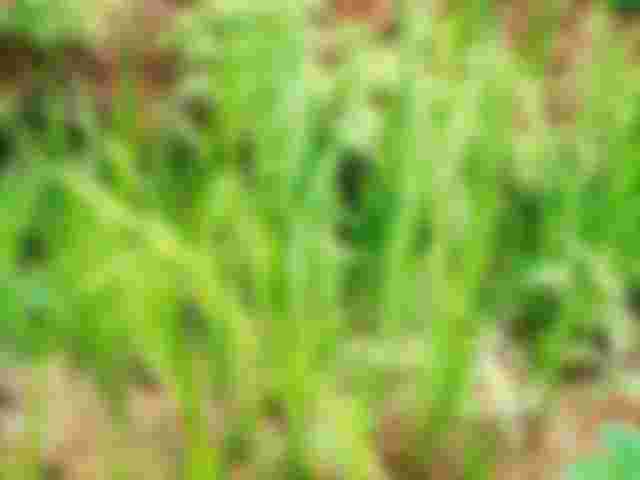In addition to real medicines and some positive thinking, the following plantlings could just be the real healing kings...
Indian Mallow

As an erect shrub, it often grows up to 2 meters which can be seen as having many branches and with a semi-woody appearance. It grows on grasslands, wastelands, and gardens. The leaves are green and unequally toothed. The flowers are yellowish and solitary, opening only at nighttime. The fruit is rounded capsules.
Medicinal Benefits
- relieves inflammation of the alimentary tract, offers soothing and protection of it
- removes unwanted mucus secretions from the bronchial tubes
- treats chronic inflammation of the urethra and urinary bladder
- treats fever
- promotes better flow of urine
- can be used as a laxative
Usable Parts: The whole plant
Application
Crushed leaves can soothe and protect the alimentary tract and relieve inflammation. In decoction, the leaves can cure bronchitis, diarrhea, bladder inflammation, urethra and fever as well as for softening muscle stiffening. The bark’s boiled soup regulates flow of urine.
Other Names:
Assamese – Liluwani
Bengali – Kunch
Burmese – Chin Gway
French – Abre
German – Abruserbse
Gujarati – Chanothi
Hindi – Gunchi
Kannada – Gulganju
Malalayam – Kunni
Marathi, Oriya, Sanskrit – Gunja
Persina – Labrigunchi
Punjabi – Mulate
Sinhalese – Madathiya
Tamil – Gundu-Mani
Telugu – Guruginia
Urdu – Ain-Ed-Dik
Prickly Chaff Flower

If you carelessly walk through a grassy field, its spines along with its seeds will surely stick on your clothes, this is how this herbaceous plant will catch your attention. Growing up to a height of 1 meter, it is easily identified upon its maturity because of its 50 cm long spikes bearing small greenish-white flowers. With its cloth-clinging ability, it is one of the plants in which we humans may greatly play a huge role in its reproduction.
Medicinal Benefits:
- Can be used as a laxative
- aids in digestion and helps in stomach pains
- aids in expelling pain-inducing gases in from the stomach
- improves appetite
Usable Parts: leaves, seeds, roots
Application:
Through decoction, mixing it with water or in any mild drinks can help in digestion. The same can also be used in dealing with bronchial and digestion issues. The leaves and roots can also be utilized in treating urinary tract infections as well as in painful food ingestion. By drinking the soup extract, coughs and asthma problems can also be dealt with. It can also be used against recurring diseases like malaria and fever.
Other Names:
Assamese, Bengali – Apang
Burmese – Kyet-Mauk-Sue-Pyan
French – Cadelari
Gujarati – Aghedo
Hindi – Latjira
Kannada – Uttarane
Konkani – Kantmogra
Malalayam – Katalati
Marathi – Aghadha
Punjabi – Kutri
Sanskrit – Apamarga
Sinhalese – Gaskar Alheba
Tamil – Nayuribi
Telugu – Uttaren
Red Amaranth

This is an herb that can be grown in gardens along with other ornamental plants and vegetables although it may also grow while being uncared for in wastelands. It may reach up to a height of 1 meter. Its leaves may sprout alternately and are purplish in color. The tiny flowers grow in clusters at the top of the stem and in leaf axils. The seeds are very small, roundly shaped, and black in color.
Medicinal Benefits Against:
- acute abdominal pains
- abnormal stoppage of menstrual flow
- unusual mucus secretions of the urethra and vagina
- chronic inflammation of the skin
- inflammation of body parts
- boils and burns
Usable Parts: the whole plant
Application:
The decoction of the roots can be used for common stomach problems. The same can also be used for female reproductive issues: improper menstrual issues, vaginal problems, and of the urethra. Externally it can be used as a form of paste for inflamed skin parts. The decoction of the roots can be used to promote lactation for breastfeeding mothers. When boiled, the roots and leaves can be made into a tea which can be given to children as a laxative. When pounded and crushed, the plant paste can be applied over boils and burns.
Other Names:
Bengali – Dengue
Burmese – Hin-Hu-Nwe-Ni
French – Fleur-Di’amor
German – Fuchsschwartz
Gujarati – Adbaodambho
Hindi – Lal Sag
Kannada – Dantu
Malalayam – Chomanachira
Marathi – Lal Bhajee
Persian – Kishtah
Sanskrit – Marisha
Sinhalese – Sudutampala
Tamil – Kirai
Telugu – Tota Kura
Urdu – Lal Sag
Sweet Flag

This one loves it wet, for it thrives in the swamps. It doesn’t look much given the fact that it looks like a typical tall grass. What makes it distinctive among other plants however is its strong aromatic appeal. When planning to collect it in volumes, you may trek into river banks and streams. Its stem can penetrate underground and is yellow in color. The leaves can reach up to 60 cms long.
Medicinal benefits against:
- rheumatic pains
- epilepsy
- insect bites
- stomach gases and gripping abdominal pains
- irregular menstrual flow
- fever
- asthma
- diarrhea
- chronic dysentery
- fungal infections
Usable Parts: the underground stem or rizhome
Application:
The decoction of it can be used to induce vomiting in cases like food poisoning or ingesting of harmful chemicals. Infusion of its stem can be an aid for attaining vitality to the body. The same can be used for removing unwanted mucus secretions from the bronchial tubes. Can serve as tonic and as a sedative.
Other Names:
Asamese, Bengali, Hindi – Bach
Burmese – Lin-Lay
French – Acore
German – Achermagen
Gujarati – Beckhand
Kannada – Baje Gida
Konkani – Ekhanda
Malalayam, Tamil – Vasambu
Marathi – Vekhand
Persian – Agrit-Turki
Punjabi – Banboj
Sanskrit – Vacha
Sinhalese – Wadakaha
Telugu – Vasa
Urdu – Bacha
Okra

Also known in English as “Lady’s Finger”, it is rich in fiber and is one of the easiest to prepare and consume among all vegetables. In appearance, it is erect and stout-stemmed that can grow up to 2 meters. The fruits are elongated capsules ornamented with yellow flowers. Growing in tropical countries, it is the slimy veggie that some may find unpleasant, but with a medicinal value that’s hard to ignore.
Medicinal Benefits:
- cures inflamed body parts
- protects the alimentary tract
- relieves common stomach pains due to bowel problems
- prevents spasms
- can be used as a laxative
- prevents pneumonia, bronchitis, urinary problems, and tuberculosis
- regulates blood and nutrients flow
Usable Parts: the whole plant
Application:
The seeds are used for heart diseases. They can be roasted and brewed as tea. When unripe, the fruit can be used to aid in curing pulmonary tuberculosis. The leaves can be boiled for a hot drink which can be very ideal for pneumonia and bronchitis. For similar ailments, tea from its dried flowers and from the fruit can be used for decoction. The roots in decoction are recommended for inflamed mucus membrane of the urethra and vagina. It is also ideal for dealing with infectious venereal diseases and other genital problems.
Other Names:
Burmese – Yone-Pa-Dee
Bengali – Dheras
Gujaranti – Bhindi
Hindi – Bhindi
Kannada – Bhenda
Malayalam – Vendaca
Marathi – Bhendi
Tamil – Vendai
Telugu – Bendi
Plants are emphasized as "better than meat" in the Bible. Maybe, exploring their medicinal benefits is something God wants us to do.





Huuum interesting from now I'm goons use this instead of taking chemical made thing I liked this entire information thanks to telling us about it I'm goona try instead of chemical things
pure cure ❤